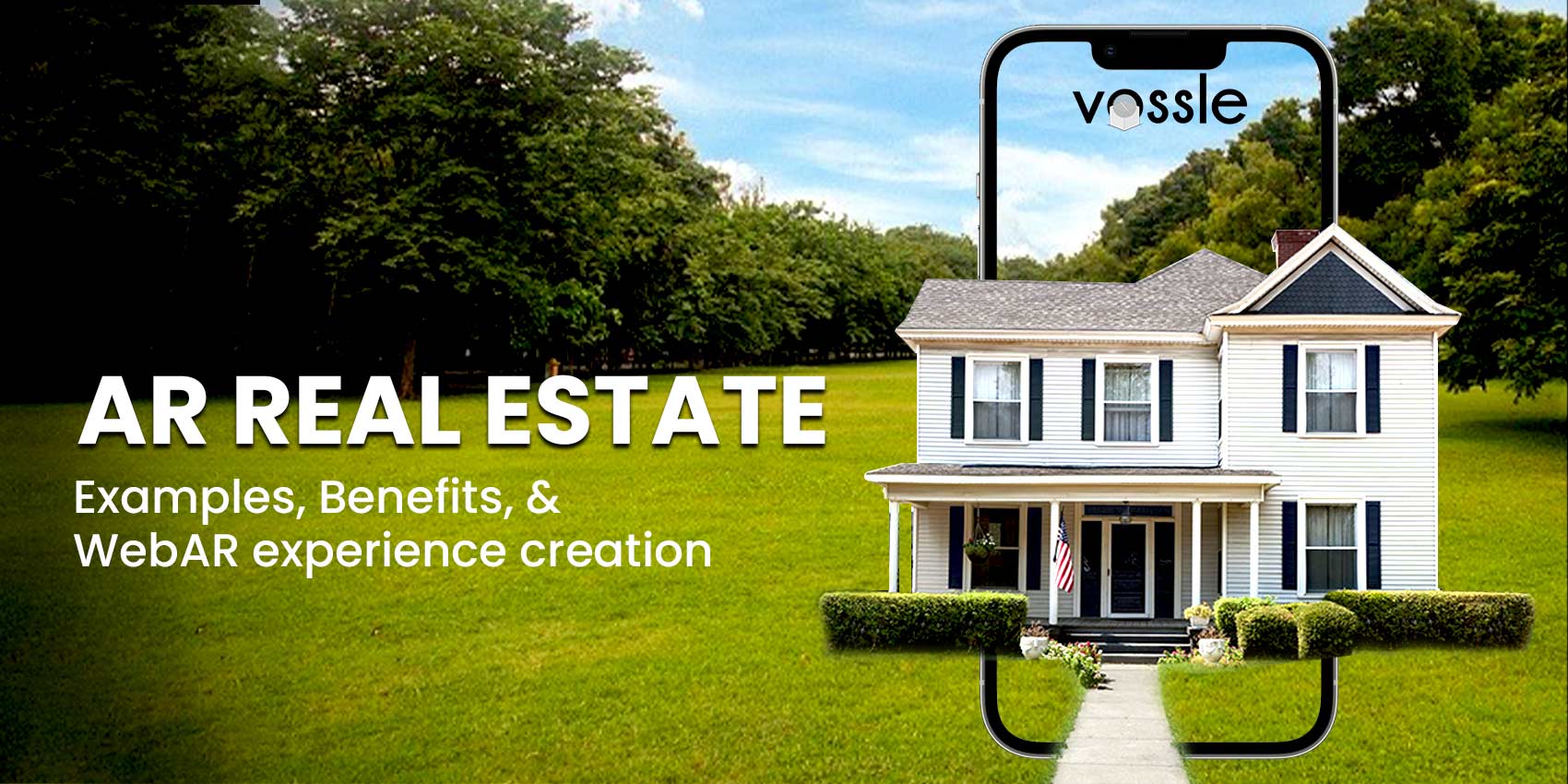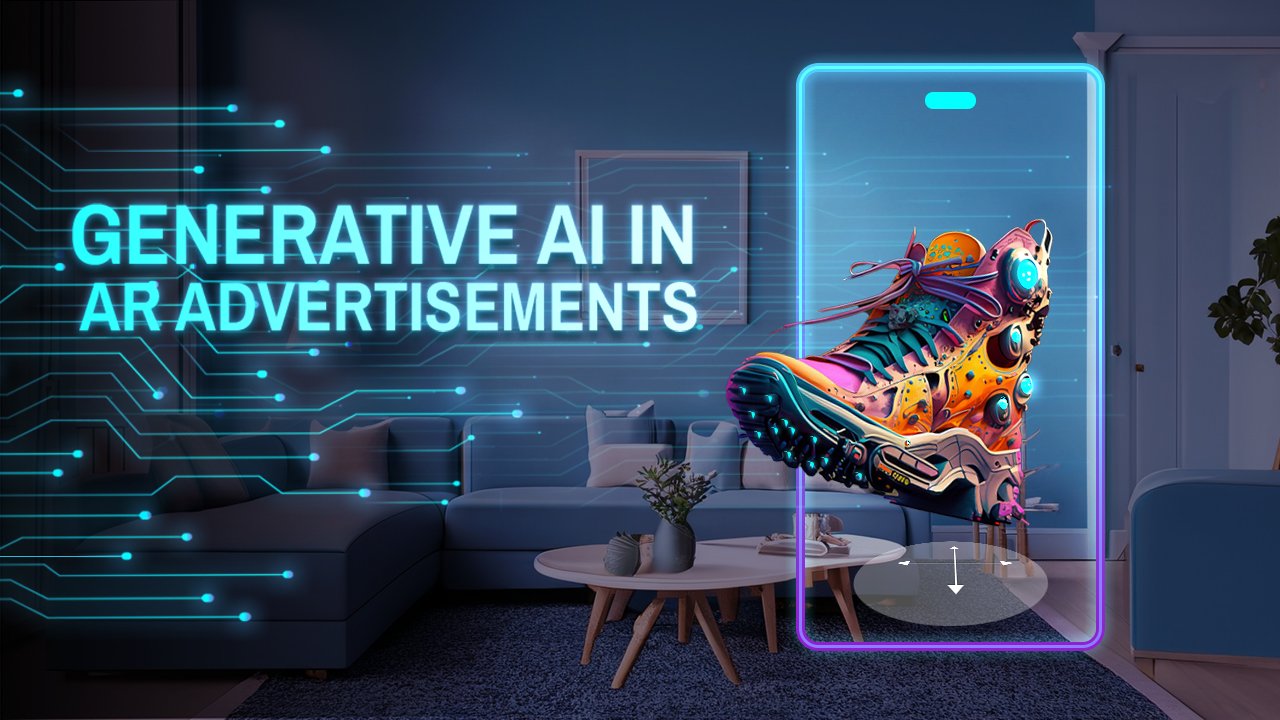Augmented reality (AR) is expanding in practically every sector of industry. According to the metrics, AR will hit the revenue mark of $340 Billion by 2028.
The core idea of AR technology is to overlay information in real-time on any smartphone, hence, enabling innovative ways to interact with real-world environments.
AR has drastically enhanced many experiences on the internet- be it playing around with fancy face filters or virtually purchasing pricey jewelry. Many industries have now started to embrace this technology because of the potential of AR to boost brand exposure and elevate customers’ experience.
It is no surprise that a niche market like real estate has also jumped on the AR bandwagon to utilize the many advantages it holds.
How Augmented Reality is advancing the Real Estate Industry
The conventional way to purchase a property involves going to the office of a realtor to get the available property listings and going on property tours.
Although purchasing a property should be exciting, doing it the traditional way makes it tedious. No one enjoys going through many listings and visiting countless places before making a decision.
But now, this scenario is changing for the better with the implementation of Augmented Reality in real estate.
AR has driven realtors and builders to make the crucial move toward the digital front. They can provide a better customer experience and boost their conversion rate. AR makes this possible by giving clients several properties to explore in just a few clicks. More interestingly, they can tour all these properties virtually without leaving their space. This AR teleportation saves valuable resources of time, energy, and money.
Benefits of Augmented Reality in Real Estate
A 2019 study by Deloitte found that half of the commercial real estate investors believed the industry should prioritize integrating AR and similar technologies.
Let’s examine some of the significant benefits of AR real estate that lend this figure solid credence.
Saves Cost & Time
The amount of time spent on property tours is one of the most frequent issues real estate companies encounter. With AR virtual tours, customers and realtors spend less time on property visits. This also implies that customers can make quicker decisions.
They can narrow down their preferences, take a quick tour of the shortlisted ones, and decide which property serves the purpose better.
Realtors are also spared the hassle of repeatedly explaining the same property features to different customers.
Such factors put together saves the time and resources of both- buyers and sellers.
Visualization
In traditional 2D representation, prospects often struggle to see themselves in a space. This can be an obstacle for realtors as well.
Real estate developers can use AR to bridge this gap between properties and potential tenants.
The implementation of AR enables real estate companies to enter the market for unfurnished or even unfinished properties. They can construct 3D models of such properties and customize them to suit any client’s requirements to give a perfect visualization.
Simultaneously, clients can view the 3D model of any property and get real-time information such as the amenities offered or the floor spacing. This ultimately results in a successful lead closure.
Enhance Customer Experience
Customers can experience a property in full immersion with AR technology in augmented reality real estate. When customers see augmented reality apartments, they can better understand how comfortable living in them will be instead of just visualizing it, which heavily influences their choice.
Moreover, virtual staging enables customers to customize the interiors and view finished goods and furniture before it is put in place. The entire procedure raises the client’s level of satisfaction.
Deep Links & Analytics
Through the use of augmented reality in real estate, realtors can have more insightful information about their clients. For example, when customers attend virtual tours, data analytics can notice where they look first and what catches their attention.
As a result, agencies can offer more quality products and create a more personalized buying experience.
Advertising
Any business, no matter what industry it operates in, can benefit from using AR technology while advertising its products and services.
Speaking of real estate, AR advertisements create virtual images of the property, allowing customers to better understand any property’s qualities such as the size of the structure, room space, the furniture that is included in the sale, and so on.
Best use cases of AR in Real Estate
AR applications in the real estate sector have progressively increased as the industry has shifted to an online paradigm. Today, AR is utilized for a variety of purposes, including interior design, construction, residential real estate, and facility management.
Virtual Tours
Virtual tours are a convenient way for customers to see the houses they’re interested in from the comfort of their living rooms. AR Tours can be used to visualize any property for sale, be it built or still in the design phase.
Proposing and reviewing renovations works well through AR too. Construction contractors and interior designers have impressive options for sharing imagery that looks real, with as much information as the recipient wants.
Before the pandemic, virtual property tours weren’t rare, but most individuals still preferred to see a property in person. Today, that mindset has shifted, with countless buyers turning to virtual property tours first, before committing to see a home in person.
Remote Maintenance
It can be a demanding process to frequently manage several properties while traveling great distances to address all of their clients’ needs. A property manager can create a digital 3D model of such properties using AR.
Tenants can simply report problems, such as a leaky pipe, with their smartphone which will be represented on the manager’s virtual simulation of the property.
With this information, maintenance workers can formulate a prompt and accurate solution by immediately determining the location, nature, and scope of the problem.
Sell Vision
Real estate developers can use augmented reality to turn their ideal designs into fully working properties in augmented reality. Potential buyers or tenants can interact with these 3D digital prototypes of the designs placed onto any land and visualize it better.
Real Estate developers can create immersive Business Cards as well to create a ‘wow’ factor for their clients.
AR has made it possible for real estate developers to communicate their visions to their audiences more effectively than ever before.
Implementing AR in a Real Estate Project using Vossle
If you intend on implementing AR technology into your real estate business, here are the following steps you would follow for a great result.
Step 1 – Conceptualize
The first step is to create a draft plan from scratch to the end.
Step 2 – Design
An appropriate design must be created for any real estate project. It should contain as much detail as possible. Based on this you have to get the 3D model of the real estate property created.
Step 3 – Development
Now, you have to use Vossle. Upload the 3D models, optimize the settings, and the AR experience is ready for deployment.
Step 4 – Deployment
Lastly, since Vossle is a tried and tested solution built through rigorous testing, you just need to deploy the experience right away.
The experiences are optimized for a range of devices and web browsers. Users from different backgrounds can easily access it through the link.
Vossle’s sophisticated platform helps you reach wider audiences in an easier, faster, and more effective manner.
Future Growth Prospects of AR in Real Estate
Given the potential of this technology, numerous businesses from a broad range of industries like healthcare, manufacturing, and energy have decided to integrate it into their business operations.
The real estate industry has already shown that it is open to adopting this technology. Considering that investors are always pouring money into property-related technology, we can expect to see an expansion in AR and VR in the real estate market.
Conclusion
A majority of real estate agents, interior designers, developers, and home furnishing companies have been embracing augmented reality to improve their services to clients.
Why?
The innovative visualization and interaction possibilities of AR technology have proved too potent to overlook.
If you haven’t explored AR as a way to elevate your real estate business, now is your time to get started. With Vossle, you can create an Augmented Reality experience in a Minute. Either way, implementing this advanced visualization technology is assured to completely transform your business!



















